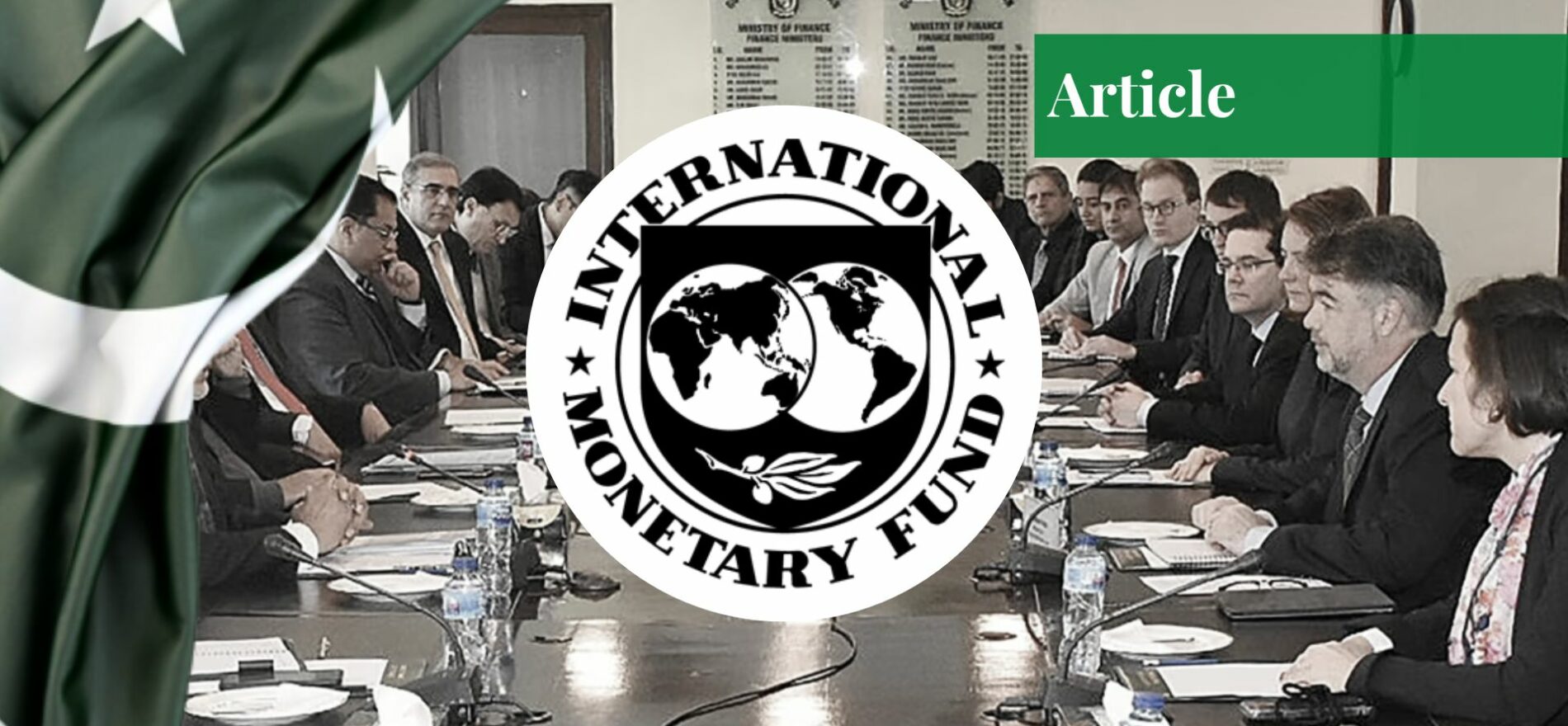Ms Afifa Iqbal has a keen interest in identity politics, colonialism and post-colonial development. She is currently working as a Research Assistant at ITU while pursuing her postgraduate studies in Development, Technology and Policy. She is a Gold Medalist in Political Science from the University of Punjab.
“Life is a dream for the wise, a game for the fool, a comedy for the rich, a tragedy for the poor.” — Sholom Aleichem
The tragedy of an ordinary Pakistani’s life defies verbal expression because those at the helm of affairs have been playing recklessly with the economy. For them, the economy, and consequently the lives of millions of Pakistanis, are nothing more than a game and a comedy. To understand the gravity of the situation, consider the following statistics from the Inflation Monitor, published by the State Bank of Pakistan for April 2023:
“National CPI Inflation on a year-on-year (YoY) basis increased to 36.4 percent in April 2023 from 35.4 percent in the previous month. It stood at 13.4 percent in the corresponding month of last year.”
Even without the statistics, the gravity of the economic crisis is obvious enough to anyone navigating the aisles for grocery essentials; for the ordinary Pakistani, mere existence has turned into a Sisyphean task. So, when will—in case it ever does—the lingering shadow of the Ides of March finally recede? To answer this, let’s retrospectively look at the recent International Monetary Fund (IMF) deal and the many misadventures that characterized its materialization.
The IMF-Pakistan Deal: A Tale of Could’ve, Would’ve, & Should’ve
On July 12, 2023, the IMF announced that its executive board had approved a “US$3 billion stand-by arrangement for Pakistan.” Kristalina Georgieva, the managing director of the fund, issued the following statement after concluding the IMF-Pakistan stand-deal:
“Pakistan’s economy was hit hard by significant shocks last year, notably the spillovers from the severe impacts of floods, the large volatility in commodity prices, and the tightening of external and domestic financing conditions. These factors together with uneven policy implementation under the EFF combined to halt the post-pandemic recovery, sharply increased inflation, and significantly depleted internal and external buffers. The authorities’ new stand-by arrangement, implemented faithfully, offers Pakistan an opportunity to regain macroeconomic stability and address these imbalances through consistent policy implementation.”
Another significant detail to glean from the IMF’s official statement is that only an initial disbursement of US$1.2 billion was slated for immediate release, while the remaining funds were earmarked for subsequent disbursement in two stages, contingent upon the outcomes of two quarterly reviews. Put bluntly, Pakistan must adhere to the IMF’s conditions to secure access to the remaining US$1.8 billion and a replay of non-compliance with the 2019 agreement should not be in the cards.
Let us now take a bird’s-eye view of the stipulated “conditions” presented by the IMF-Pakistan deal. According to the IMF’s official statement, the “SBA-supported program” would prioritize “implementation of the FY24 budget to facilitate Pakistan’s needed fiscal adjustment and ensure debt sustainability, while protecting critical social spending.” In simpler terms, this implies that debt servicing would be prioritized through spending cuts, wherein the “protected interests” would remain untouched while public and development spending would be getting the axe. Two cheers already for the pro-people nature of this program, and the powers that are spearheading the implementation of this program.
Moving forward, the second area of focus would be “a return to a market-determined exchange rate and proper FX market functioning to absorb external shocks and eliminate FX shortages.” This entails that the people of Pakistan should brace themselves for exchange rate volatility, instability, and currency depreciation. To understand this: Imagine you’re the owner of a corner grocery store. While your inventory may not heavily rely on imports, some items on your shelves do come from abroad. Even if most of your products are locally sourced, you’re not exempt from the influence of rising fuel costs.
Suddenly, the expenses tied to fuel and imports surged. This leaves you in a difficult spot—caught between a rock and a hard place. You can either absorb the increased costs, which will directly affect your profit margins, or you can transfer the burden to your customers, who might not have the resources to easily cope with elevated prices due to the weakening currency. Regardless of your choice, your profit margins take a hit. And if that’s not enough, you’re also up against competition from larger retailers that have the means to navigate currency fluctuations more effectively.
Then, there are the third and fourth conditions, which focus on “an appropriately tight monetary policy aimed at disinflation and further progress on structural reforms, particularly with regard to energy sector viability, SOE governance, and climate resilience.” At first glance, a policy targeting disinflation might appear promising; however, in practice, it’s likely to result in elevated borrowing expenses, increased unemployment, and a slowdown in economic growth. Then there is the issue of structural reforms, and historical precedent suggests that these reforms have rarely alleviated the plight of the masses in the country.
Nobody should be surprised here; these conditions aren’t new, and this isn’t our first rodeo. A 2011 study delved into the effects of structural adjustment programs spanning 1980 to 2001, yielding the following conclusions:
“On the basis of results, it is concluded that SAP did not remain favorable for the domestic goals. Various structural adjustment policies such as reduction in budget deficit, increase in indirect taxes, adjusting exchange rate, and reduction in subsidies have increased economic problems during the period of adjustment in Pakistan. One of the important policy instruments was sliding down of budget deficit. The budget deficit that should be achieved through an increase in revenue or reduction in current expenditures has been achieved by a reduction in development expenditures. The reduction in budget deficit has increased unemployment, income inequality, and inflation. The increase in indirect taxes has increased unemployment, income inequality, and inflation. It decreased the growth of per-capita GDP income.”
The Leadership Response: A Primer on Apathy and Political Disconnect
The more things change, the more they remain the same for the people of Pakistan. Even in such trying times, the leadership was preoccupied with self-promotion, distastefully attempting to portray themselves as the saviors of the people. Ishaq Dar, the then-finance minister, took to tweeting like the DawahBros after the approval of the stand-by arrangement instead of showing much-needed self-accountability. After all, it was the finance minister who was responsible for derailing the IMF negotiations earlier.
The response of the rest of the leadership wasn’t notably different from that of the then-finance minister. Those in power, both constitutionally and extra-constitutionally, seemed more occupied with stifling dissent, corralling the critics, and solidifying their hold on authority, rather than genuinely focusing on the welfare of the masses. But one must remember that every king, even the ones anointed by God himself, needs people to rule over.
So, What Lies on the Horizon?
In the intricate interplay of policy decisions and power dynamics, the plight of ordinary citizens has often been and continues to be relegated to the periphery. Moreover, the leadership’s prioritization of politically victimizing their opponents and adherence to structures that perpetuate inequality paints a bleak picture. The same government that does not hesitate to levy heavy direct and indirect taxes on the salaried class also forks out billions in subsidies to real estate moguls and unproductive businesses.
So, it is safe to say that as long as the current attitude of the leadership continues, the masses can either leave the country or try to make ends meet through any job they can get. As the Red Queen said, “My dear, here we must run as fast as we can, just to stay in place.”
Both these choices seem next to impossible for the majority of the people, yet one constant remains highly likely: the masses are destined to endure suffering.
If you want to submit your articles, research papers, and book reviews, please check the Submissions page.
The views and opinions expressed in this article/paper are the author’s own and do not necessarily reflect the editorial position of Paradigm Shift.



















